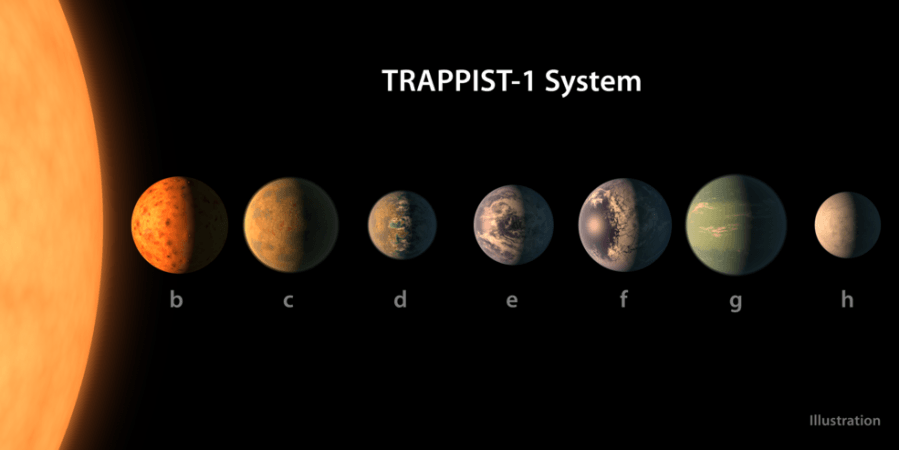
Remember the seven planets NASA had discovered that revolve around their own star much like our own solar system? Nasa had earlier given us only some pictures of the ultra-cool dwarf star, TRAPPIST-1, that hosts a total of seven Earth-size planets. But now the US space agency has released a video of the planet-rich Trappist-1 star system.
Read: NASA to hunt for signs of life on TRAPPIST-1 exoplanet system using James Webb Space Telescope
The 11-by-11 pixel animation shows the dwarf star as it was on February 22. The animation, which is called the 'target pixel file', shows 60 brightness measurements or photos taken by Kepler's onboard camera once a minute for an hour.
"The animation shows the amount of light detected by each pixel in a small section of the camera onboard NASA's Kepler space telescope. The light collected from TRAPPIST-1, an ultra-cool dwarf star approximately 40 light-years from Earth, is at the center of the image. Not directly visible in the movie are the seven Earth-size planets that orbit TRAPPIST-1," said NASA.
While the data accumulated by NASA's Spitzer Space Telescope (which discovered the solar system- TRAPPIST-1) was used to measure the precise sizes of these exoplanets, the Kepler's pixel file gave NASA a representation of the light levels of TRAPPIST-1 in an hour.
According to NASA, "Kepler detects a change in brightness when a planet passes in front of a star from the vantage point of the telescope. Transiting planets block a tiny fraction of starlight that produces miniscule dips in the brightness of their host star. An Earth-size planet passing in front of a small ultra-cool dwarf star like TRAPPIST-1 creates less than a one percent dip in brightness, and is not visible with the naked eye."
Meanwhile, researchers are planning to study the life-supporting ability of the exoplanets with the help of the James Webb Space Telescope (JWST), which is under construction and is likely to be launched in October 2018.
This is a target pixel image of #TRAPPIST1. Its starlight and story traveled 40 yrs to reach the Kepler spacecraft.https://t.co/UJsLZ7sQgO pic.twitter.com/2Pg1DvuLTv
— NASA Kepler and K2 (@NASAKepler) March 11, 2017

















